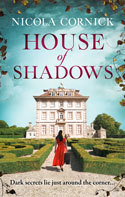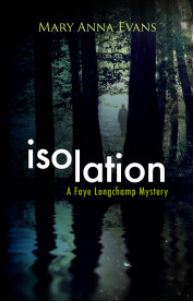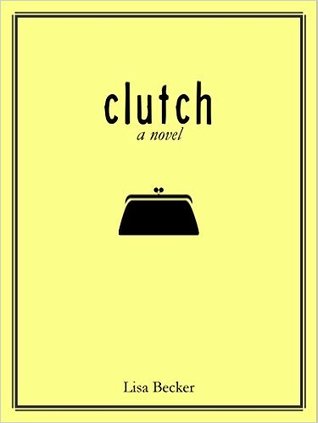DAUGHTER OF SAND AND STONE by Libbie Hawker
Publication Date December 1, 2015.
Description from Amazon.com:
When Zenobia takes control of her own fate, will the gods punish her audacity?
Zenobia, the proud daughter of a Syrian sheikh, refuses to marry against her will. She won’t submit to a lifetime of subservience. When her father dies, she sets out on her own, pursuing the power she believes to be her birthright, dreaming of the Roman Empire’s downfall and her ascendance to the throne.
Defying her family, Zenobia arranges her own marriage to the most influential man in the city of Palmyra. But their union is anything but peaceful—his other wife begrudges the marriage and the birth of Zenobia’s son, and Zenobia finds herself ever more drawn to her guardsman, Zabdas. As war breaks out, she’s faced with terrible choices.
From the decadent halls of Rome to the golden sands of Egypt, Zenobia fights for power, for love, and for her son. But will her hubris draw the wrath of the gods? Will she learn a “woman’s place,” or can she finally stake her claim as Empress of the East?
Zenobia, the proud daughter of a Syrian sheikh, refuses to marry against her will. She won’t submit to a lifetime of subservience. When her father dies, she sets out on her own, pursuing the power she believes to be her birthright, dreaming of the Roman Empire’s downfall and her ascendance to the throne.
Defying her family, Zenobia arranges her own marriage to the most influential man in the city of Palmyra. But their union is anything but peaceful—his other wife begrudges the marriage and the birth of Zenobia’s son, and Zenobia finds herself ever more drawn to her guardsman, Zabdas. As war breaks out, she’s faced with terrible choices.
From the decadent halls of Rome to the golden sands of Egypt, Zenobia fights for power, for love, and for her son. But will her hubris draw the wrath of the gods? Will she learn a “woman’s place,” or can she finally stake her claim as Empress of the East?
REVIEW
I've been looking forward to this book ever since I read that Libbie Hawker was writing it. This year I reviewed her Pocahontas novel on Book Babe here. I found it interesting and absorbing. Daughter of Sand and Stone is a book dealing with Queen Zenobia of Palmyra. She was a warrior queen and a rebel against the Romans like another favorite of mine, Queen Boudica of the Iceni. I lick my chops and salivate when I learn about historical fiction dealing with Zenobia. I received a copy from the publisher via Net Galley in return for this honest review.
The first time I read a Zenobia novel I was disappointed. It was The Rise of Zenobia by J. D. Smith. I reviewed Smith's version on Book Babe here. My biggest problem with it was that Zenobia wasn't the protagonist. It was her general, Zabdas. I felt distanced from Zenobia. In Daughter of Sand and Stone, Zabdas plays an important role, but the main perspective is very definitely Zenobia's.
I feel that it's also important to mention the recent destruction of Palmyra by ISIS in the context of any current review of a book about Zenobia. Here is an article about it from the U.K. Guardian. Zenobia loved her city and it means a great deal to modern day Syrians who are opposed to ISIS. Ancient Palmyra and Zenobia are essential parts of our world heritage, but they particularly belong to the history of Syria. It seems to me that anyone who participates in preserving the memory of ancient Palmyra and Zenobia is engaging in an act of defiance against those who seek to destroy them. That's what Daughter of Sand and Stone means to me. It's an act of defiance.
Like Libbie Hawker's Pocahontas, her Zenobia is ambitious. In the case of Pocahontas, it's definitely a flaw due to lack of maturity. She simply craves attention and her ambitions are comparatively small scale. On the other hand, Hawker's Zenobia wants an empire and to reign as Queen in Egypt like her maternal ancestor, Cleopatra. She is continually told by members of her family and later by a Roman Emperor that she is going beyond the bounds of women's sphere. I think this is a strength. We need women like Zenobia. She had courage, vision and intelligence. She deserved to succeed.
Hawker extrapolates from Roman primary sources for the ending of her novel. In Hawker's very detailed Author's Note she says that a number of writers on Zenobia don't believe the official Roman version and I confess that I don't either. Within the context of the book, it was anti-climactic. So in addition to my feelings that it was out of character and not a fit ending for Zenobia, it wasn't a good ending from a dramatic perspective.
Yet up until that ending, I was cheering on Zenobia and feeling so delighted that we got a modern novel about the Warrior Queen of Palmyra in which she lives and breathes. It may not be the ideal Zenobia novel, but it perpetuates her legacy at a time when I think it's particularly important to do so.
***************
Links for more information about Daughter of Sand and Stone
Author's website: http://libbiehawker.com
Facebook: https://www.facebook.com/libbie.hawker?fref=ts&ref=br_tf
Libbie Hawker’s TLC Book Tours TOUR
STOPS:
Monday, November 30th: Peeking Between the Pages
Tuesday, December 1st: Bibliotica
Tuesday, December 1st: Life is Story
Wednesday, December 2nd: Reading Reality
Thursday, December 3rd: A Chick Who Reads
Friday, December 4th: Thoughts from an Evil Overlord
Monday, December 7th: Luxury Reading
Tuesday, December 8th: Spiced Latte Reads
Wednesday, December 9th: Book Dilettante
Thursday, December 10th: Mom’s Small Victories
Friday, December 11th: Book Nerd
Monday, December 14th: 100 Pages a Day…Stephanie’s Book Reviews
Monday, December 14th: Book Babe
Tuesday, December 15th: A Bookish Affair
Wednesday, December 16th: The Reader’s Hollow
Thursday, December 17th: Books a la Mode – author guest post
Monday, December 21st: Raven Haired Girl
Tuesday, December 22nd: The Lit Bitch
Friday, December 25th: Patricia’s Wisdom
Tuesday, December 29th: I’m Shelfish
Tuesday, December 29th: Time 2 Read
Wednesday, December 30th: Broken Teepee













